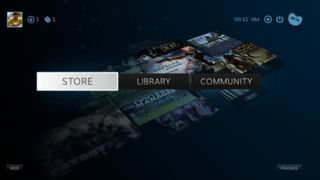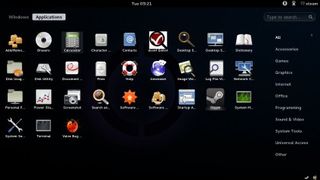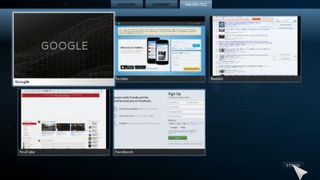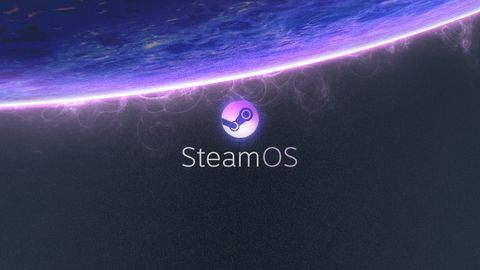Why you can trust TechRadar
Anyone who has used Steam's Big Picture mode will be familiar with the look of SteamOS. It's essentially the same, except you don't have to go through a layer of Windows or OS X to get to it. The ambient, percussive music forms a non-intrusive soundtrack, the wallpaper is a stack of games floating around in mid-air, and it switches between the controller and keyboard fluidly. It's easy to navigate, especially with an Xbox controller, and it's on a par with other console's interfaces.

The act of running and buying games is Steam's forte, and these are taken care of with the library and store, respectively. Titles scroll horizontally, so you can see each and every new Minecraft clone quickly and easily. And once you've logged into your account, you can buy games as you would if you were using Steam's store or web interface.

Valve includes its own web browser, with bookmarks set up for popular sites such as YouTube, Google and Reddit, and you can add favourites to this page. There's support for multiple tabs so you can flick incessantly between sites, while controller-based text entry is handled via a nifty flower-type interface, which uses the thumb sticks and buttons to choose groups of letters.

Getting to the Linux desktop isn't supported out of the box, but it can be enabled via the 'Interface' option in the settings screen. Once you're there it's a bare bones affair, with a few standard apps such as a calculator, document and image viewers, the Iceweasel web browser and a disc burner. The good news is that as it's running a standard version of Debian you can add Linux programs via a package manager.
For the time being, the SteamOS client merely handles gaming and the web, but Valve has bigger plans for it. Multimedia content, such as Hulu, Netflix and Spotify, were in the pipeline, but never saw a full release. These apps would have been presented within the SteamOS Big Picture mode, and would have been a boon for anyone who wished to use their TV computers for more than just gaming.
In February of 2014, Valve launched Steam Music on SteamOS to a select number of beta testers. The service pulls tracks from your local music library and pulls up relevant album artwork for display. The service is rather limited at the moment (some streaming solution would be nice), but don't think for a second that Valve's work here is done.

Then there's the slight matter of gaming itself. Approximately a third of our Steam library is available for Linux. Valve has ported its Source engine to the open-source operating system, so its blockbuster games like Half-Life 2, Team Fortress 2 and Portal are all available. Indie titles - which generally require less coding to drop into Linux - are also downloadable, and you'll find Stardew Valley, Hotline Miami and Bastion on the store.
Valve is pushing bigger developers towards Linux. You'll already find the turn-based strategy title XCOM2 and soccer spreadsheet Football Manager 2018 on the store, and real-time strategy Total War: Rome II has also been ported over. The big unknown here is how many developers and publishers will want to develop for Linux on top of consoles and PCs. It is, after all, an entirely different operating system with a whole new load of bugs and idiosyncrasies to deal with.
Valve has a novel, if slightly awkward solution to non-Linux games: streaming. If Windows and SteamOS computers are connected to the same network you can stream games from the former to the latter. Having a Windows PC running all the time sort of defeats the point of a Steam console, but it could be the only way to get your favourite games running.
Valve launched this streaming feature to the SteamOS beta just before the summer, though we've yet to be able to test it. (It also works on any computer running Steam, but still requires a Windows PC as the source.)
Valve quietly dropped the ability to suspend SteamOS, a decision that was made due to a lack of graphics hardware and software support on Linux according to a Github entry written by a company employee. According to the post, the issue means that Linux fails to wake up USB controllers when a Steam Machine is resumed from sleep mode, something that isn't a problem in Windows and OS X.
What is a hands on review?
Hands on reviews' are a journalist's first impressions of a piece of kit based on spending some time with it. It may be just a few moments, or a few hours. The important thing is we have been able to play with it ourselves and can give you some sense of what it's like to use, even if it's only an embryonic view. For more information, see TechRadar's Reviews Guarantee.

